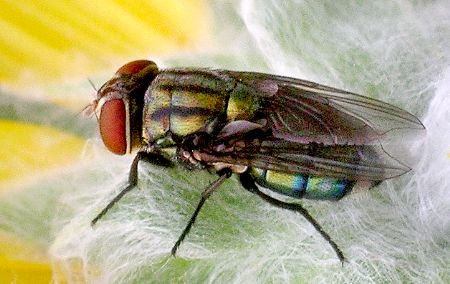by Valerie
April, 2017Secondary Screwworm
The metallic blue or green flies in the family Calliphoridae are commonly called blow flies. Many are economically important and the secondary screwworm (Cochliomyia macellaria), named for the behavior of its larvae, is one of these. It is found across much of the U.S. and is related to the notorious primary screwworm, which looks very similar but has maggots that feed on living flesh instead of dead. Luckily for animals and people in North America, the primary screwworm was eradicated in an intensive program that began in the 1950s in Florida and included the entire southern U.S. by 1982. Most of Mexico was also targeted and the flies disappeared there by the mid 1980s. Continued efforts into the 1990s expanded the fly-free zone into several Central American countries as well. In spite of a recent outbreak of the primary screwworm in the Florida Keys last year (thought to possibly be caused by insects from Cuba), our country remains free of the pest, though this situation requires constant monitoring. Although not the devastating livestock pest that its cousin is, the secondary screwworm will sometimes infest wounds where dead tissue is present and can transmit a number of diseases in the process. However, it is also beneficial in several ways. These flies are important decomposers of carrion and their life cycle is well studied, making them useful in forensic investigation. As an added bonus, the adult flies feed on nectar and are pollinators. |